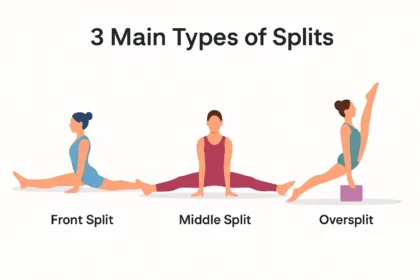Simone Biles has revolutionized women’s gymnastics with her innovative and highly difficult vaults, namely the Biles I and Biles II. These skills have set new standards in women’s competitions, but how would they fare in men’s events?
Technical Difficulty and Scoring
- Biles I: A Yurchenko half-on with two twists off (also known as a Cheng). Difficulty score: 5.8-6.0.
- Biles II: A Yurchenko entry to a double pike. Difficulty score: 6.4.
In men’s gymnastics, the hardest vault currently performed in competition is the Yurchenko triple twist, with a difficulty score of 5.6. This suggests that both Biles vaults, especially the Biles II, would be highly competitive in terms of difficulty scores.
Vault Table Height Consideration
In men’s gymnastics, the vaulting table is set 10 cm (about 4 inches) higher than in women’s gymnastics, a difference designed to account for the generally taller stature of male athletes.
- Women’s vault table height: 125 cm (4’1″)
- Men’s vault table height: 135 cm (4’5″)
This 10 cm difference significantly impacts vault performance:
- Increased Airtime: The higher table in men’s gymnastics provides greater vertical lift, resulting in more time in the air. This extra time is crucial for completing complex rotations, both in flips and twists.
- More Time to Adjust Body Position: Additional height allows gymnasts to maintain better form throughout their vaults, particularly in moves combining flips and twists like the Biles II.
- Landing Control: Extra airtime gives gymnasts more opportunity to prepare for and control their landings, which is especially important for blind landings like those in the Biles II.
Impact on the Biles I and Biles II Vaults
Biles I (Amanar Vault):
The Biles I, or Amanar vault, is a round-off onto the springboard, a back handspring onto the vault table, followed by a 2.5-twisting back layout. In women’s gymnastics, this vault is considered highly difficult, with a difficulty score of 5.8-6.0, depending on the execution.
Competitiveness in Men’s Vaulting:
- Standard Vault in Men’s Competitions:
In men’s vault finals, the Amanar is considered a standard skill, with many gymnasts performing vaults that incorporate even more twists or additional flips.
For example, male gymnasts often perform vaults with 3 twists or vaults like the Dragulescu (a handspring double front with a half twist), which has a difficulty score of around 5.6-6.0 depending on execution.
- Difficulty and Airtime:
The Biles I would not stand out in a men’s vault final, where higher difficulty vaults are the norm. While the vault is technically sound, the 2.5 twists seen in the Amanar are commonly executed with ease by men who benefit from greater power and the extra airtime provided by the higher vaulting table.
Male gymnasts typically gain more height off the 135 cm vault table, allowing them to perform these twists with better control and potentially add more twists or flips.
Conclusion:
The Biles I would likely not be competitive in a men’s vault final due to its lower difficulty compared to the vaults typically performed by male gymnasts. While it’s an exceptional vault in women’s gymnastics, it would not offer the complexity necessary to compete against men’s vaults with higher difficulty scores.
2. Biles II (Yurchenko Double Pike Vault)
The Biles II, or Yurchenko Double Pike, involves a round-off back handspring entry, followed by two backward flips in a pike position. It is considered one of the most difficult vaults in women’s gymnastics, with a difficulty score of 6.4.
Competitiveness in Men’s Vaulting:
- High Difficulty Vault:
The Biles II would be more competitive in a men’s vault final than the Biles I. With a difficulty score of 6.4, it places itself among some of the more challenging vaults in men’s gymnastics.
Few male gymnasts attempt the Yurchenko Double Pike because of the complexity and risk involved in performing two backward flips in the pike position with a blind landing.
- Men’s Vault Complexity:
In men’s competitions, gymnasts typically perform vaults like the Tsukahara with multiple twists or the Dragulescu, but fewer male gymnasts attempt double pike flips in their vault routines.
The risk and skill required to execute a Yurchenko Double Pike could make the Biles II a viable competitor, especially considering that it’s rare even in men’s vaulting.
- Height and Control:
Men benefit from the extra height provided by the 135 cm vault table, which gives them more room to complete rotations. However, the Biles II is challenging regardless of vault table height because of the precision needed to maintain the pike position through two flips.
The difficulty lies in both the complexity of the flips and the control required to land cleanly, especially given the blind landing.
Conclusion:
The Biles II would be competitive in a men’s vault final due to its 6.4 difficulty score, positioning it among the more difficult vaults seen in men’s competitions. While men’s vaulting generally involves more twisting elements, the Yurchenko Double Pike would be a rare and challenging addition, making it a standout vault even in the men’s field.
How Do Men’s Vault Difficulty Scores Compare?
The most difficult vaults in men’s gymnastics typically range from 6.0 to 6.4, though some of the highest-rated vaults may go even higher if performed with exceptional precision. The Yonekura and Kasamatsu variations, for instance, score up to 6.2 – 6.4 due to their combination of multiple flips and twists.
In women’s gymnastics, the highest difficulty vaults performed range from 5.8 to 6.4. Here’s a comparison of some top women’s vaults:
- Biles I (Amanar Vault): 5.8 – 6.0
- Biles II (Yurchenko Double Pike): 6.4
- Cheng Vault: 6.0
- Produnova Vault: 6.4
While these vaults are some of the most difficult in women’s gymnastics, they align with mid- to upper-tier difficulty vaults in men’s gymnastics. The reason for this difference in scoring can be attributed to several factors:
- Greater Physical Power in Men’s Vaulting: Men generally generate more height and distance off the vault table due to their greater upper body and core strength, enabling them to perform additional flips or twists. The extra height provides them with more airtime, allowing them to perform more rotations and complex combinations.
- Higher Vault Table: The 10 cm height difference (men’s vaulting table is set at 135 cm vs. women’s 125 cm) gives male gymnasts additional airtime, enabling more intricate vaults. The extra height provides men with more room to complete twists or flips without rushing the routine.
- Complexity of Twists and Flips: Men’s vaults often include two or more twists or multiple flips, while women typically perform vaults that involve 1.5 to 2.5 twists or one to two flips. This adds to the complexity and increases the difficulty score in men’s vaults.
In summary, the Biles II, with its exceptional difficulty score and technical complexity, would likely be highly competitive even with the advantage of a higher vault table. Its rarity and risk factor keep it at the cutting edge of vault difficulty across both men’s and women’s gymnastics.













